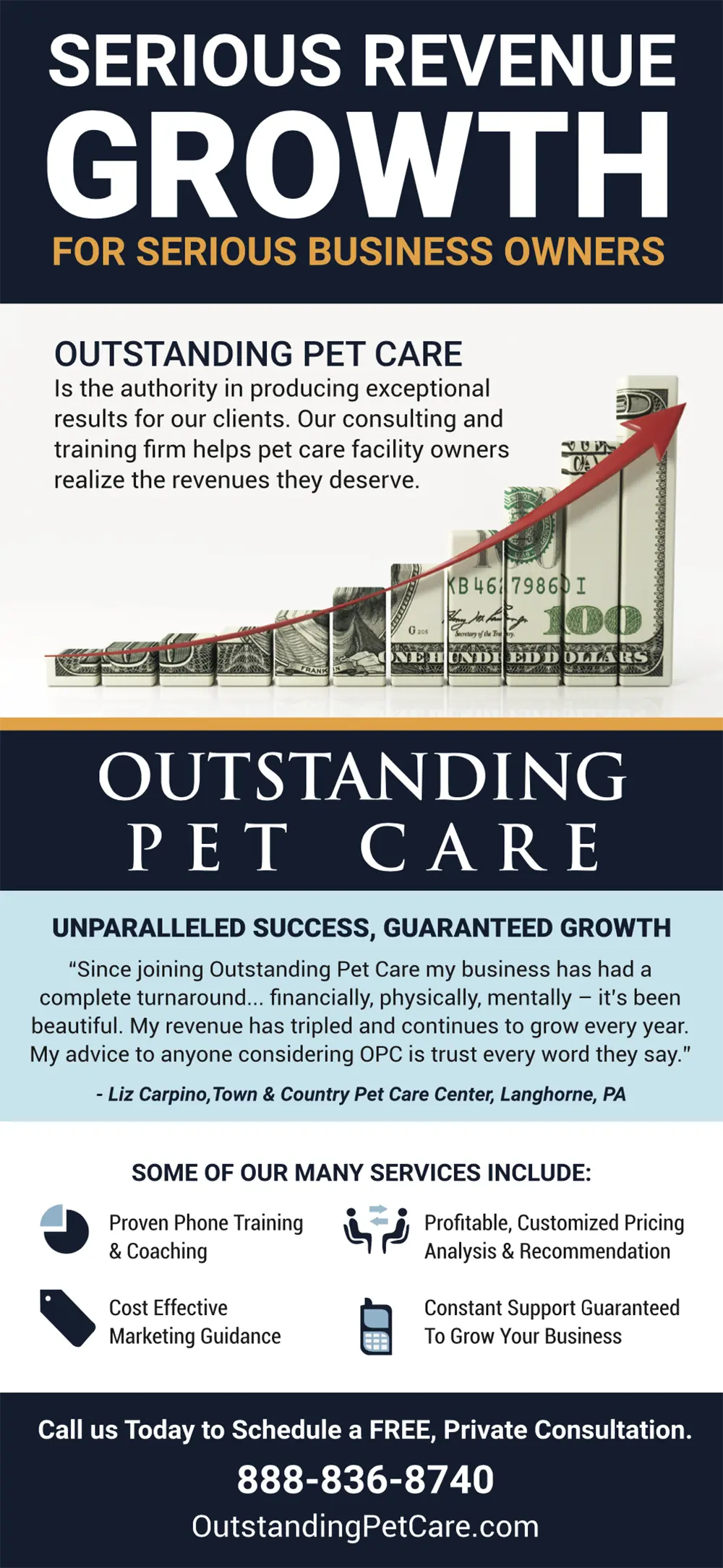Business



By Laura Laaman
n today’s challenging economic climate, businesses across all industries are under pressure, and pet care is no exception. Costs continue to rise, and still brick-and-mortar pet care businesses must find a way to beat the competition—including app-based rivals that don’t have the same financial burdens.
At a time when revenue is scarcer than ever, pet care business owners must step carefully…or end up in a deep revenue hole. Revenue pitfalls are common (yet costly) mistakes sometimes hidden in plain sight. The following will outline four of these common pitfalls that may be impacting your bottom line.
1. Not treating the phone like a gold mine.
In any pet care business, the phone is not just a communication tool—it’s a revenue-rich gold mine waiting to be unearthed and monetized. Many pet care business owners find themselves in this pitfall, but climbing out is well within their reach. It starts with recognizing the phone for what it could (and should) be: a powerful tool to convert and maximize as many leads as possible into revenue.
Why is this so essential in this business segment? Because pet parents new to your business are anxious. They crave a human connection with their pet’s potential caregiver, and they want reassurance and a sense of confidence in your company. This means the way your business handles prospective client calls significantly affects revenue.
In many pet care businesses, prospective client calls are taken by any available member of staff or, worse yet, missed entirely. A single client can spend thousands or even tens of thousands of dollars at your facility through the course of their dog’s life. Each mishandled or missed prospective client phone call could be worth that much.
On the initial phone call, the person who picks it up has mere minutes to gain the customer’s trust, differentiate your company from your competition, promote lucrative add-ons and secure the booking. Without proper training, this is a big ask for any untrained employee—and a big missed opportunity for your revenue.
2. Relying on online reservations for new customers.
Online reservations can’t earn the customer prospect’s trust. A screen can’t help them understand the exceptional care and experience at your facility, why your rates are appropriate and why you’re so much better than inferior competitors. And good luck effectively selling add-ons and extra services! When each new customer inquiry is as valuable as gold, do you really want to trust them to a generic digital form?
Moreover, reliance on online reservations for new customers is a quick road to commoditization. Commoditization is rampant everywhere, including pet care. This means new customer prospects see your services and care as interchangeable with anyone else’s, so why should they pay a cent more than the lowest possible rate?

Even if you have the best facility, most exciting activities, wonderful staff or the healthiest environment, the customer might just see a price tag. The most effective strategy against commoditization is setting your business apart in the eyes of the customer prospect, and a digital form can’t do that.
3. Over-demanding group play for all dogs.
Many dogs are friendly with humans but not with other dogs, so excluding these dogs limits your customer base significantly—and sends them straight to your competitors. Wise pet care businesses offer appropriate play alternatives for these pets, such as one-on-one or customized play. This casts a much wider net at a time when new-customer acquisition is critically important. It’s safer, more appealing to customers and opens a new, valuable revenue stream.
4. Sticking to an all-inclusive price model.
Price-sensitive customers may not want to pay for services they don’t need or value, so they’ll go elsewhere. However, many customers are willing to spend an even higher amount. But with all-inclusive pricing, this revenue will go to your competitors who offer a more robust experience.
A much more effective model includes separately priced activity packages. This allows pet parents to choose and pay for the services they want while tailoring their purchase for their needs and budget. Not only does this attract a wider range of pet parents, but it also helps you make the most of every inquiry.
Additionally, studies have shown that customers are more likely to make a purchase when given multiple, distinct options. The power of choice can translate to much more revenue for your business.
Even in this tough economy, pet care is a strong and growing industry. By making even a few of these changes, you can see a significant leap in your revenue and ensure your business not only survives, but thrives for years to come.
Laura Laaman is president of Outstanding Pet Care. If you’re interested in growing your revenues, any of the strategies in this article, or any of our other proven and guaranteed services, schedule a consultation by calling 1-888-836-8740 or visiting www.outstandingpetcare.com/contact


